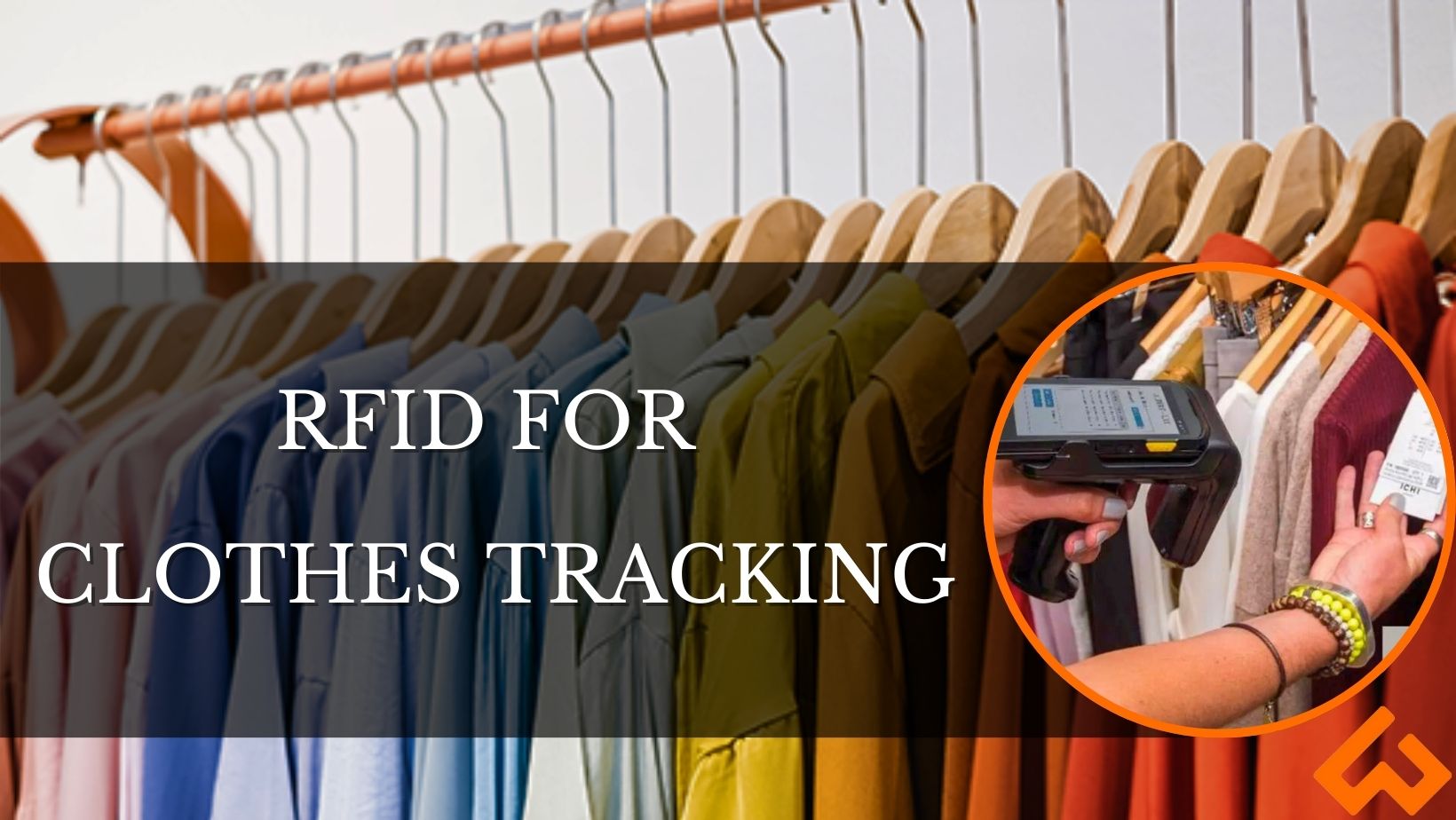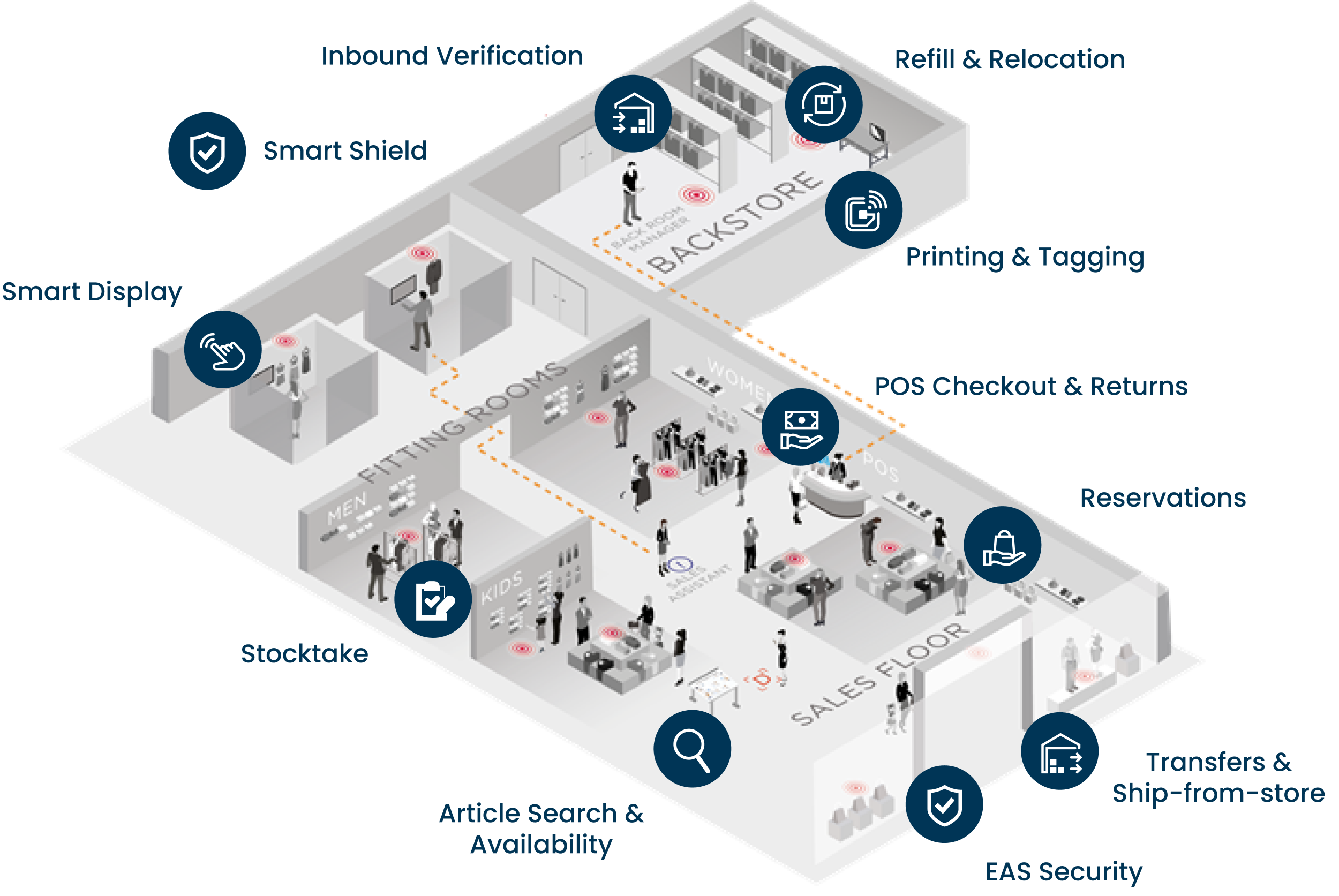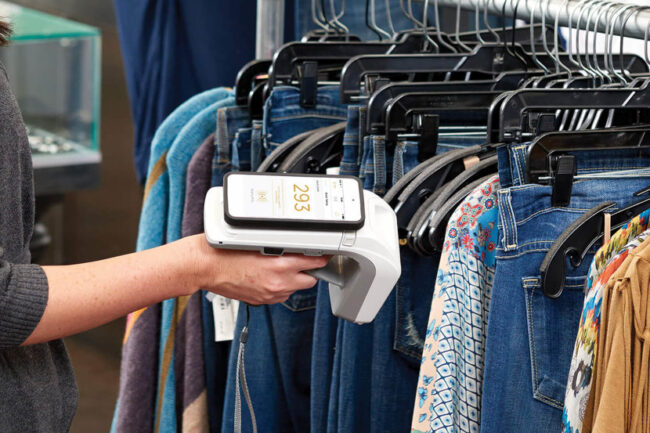Welcome to our section dedicated to the use of RFID technology in the fashion sector. Whether you are just starting to explore the world of technology applied to fashion or are looking for specific insights into how RFID technology can revolutionize this sector, you are in the right place. If you are not yet familiar with the basics of RFID technology, we invite you to visit our introductory page, where we provide a detailed overview of how it works and its general applications.
The adoption of RFID in fashion is not just a technological trend, but a real revolution that allows fashion brands to tackle contemporary challenges such as counterfeiting, sustainability, and personalized services.
Overview of RFID in Fashion
Definition and Key Functions of RFID in Fashion
RFID is a technology that uses radio waves to automatically identify and track objects to which RFID tags are applied. In the fashion sector, these tags are often embedded in labels or directly in products, enabling a range of crucial functions from inventory management to personalized customer experiences. RFID tags contain digital data that can be read by specialized scanners without the need for direct visual contact, facilitating quick and remote operations.
History of RFID Introduction in the Fashion Industry
The adoption of RFID in the fashion sector began in the early 2000s when large retail chains started exploring the potential of this technology to improve supply chain efficiency. Initially used for inventory management in warehouses, RFID quickly proved its value, expanding to various other applications within the sector. Today, many major fashion brands use RFID not only for logistics but also to create a more engaging and personalized shopping experience for customers.
RFID in the fashion sector has evolved from a simple tracking tool to an integral part of a brand’s digital strategy, pushing the industry toward greater transparency, responsiveness, and connection with consumers. This ongoing evolution continues to profoundly impact business operations and marketing strategy in fashion, making RFID an indispensable technology for anyone operating in this sector.







